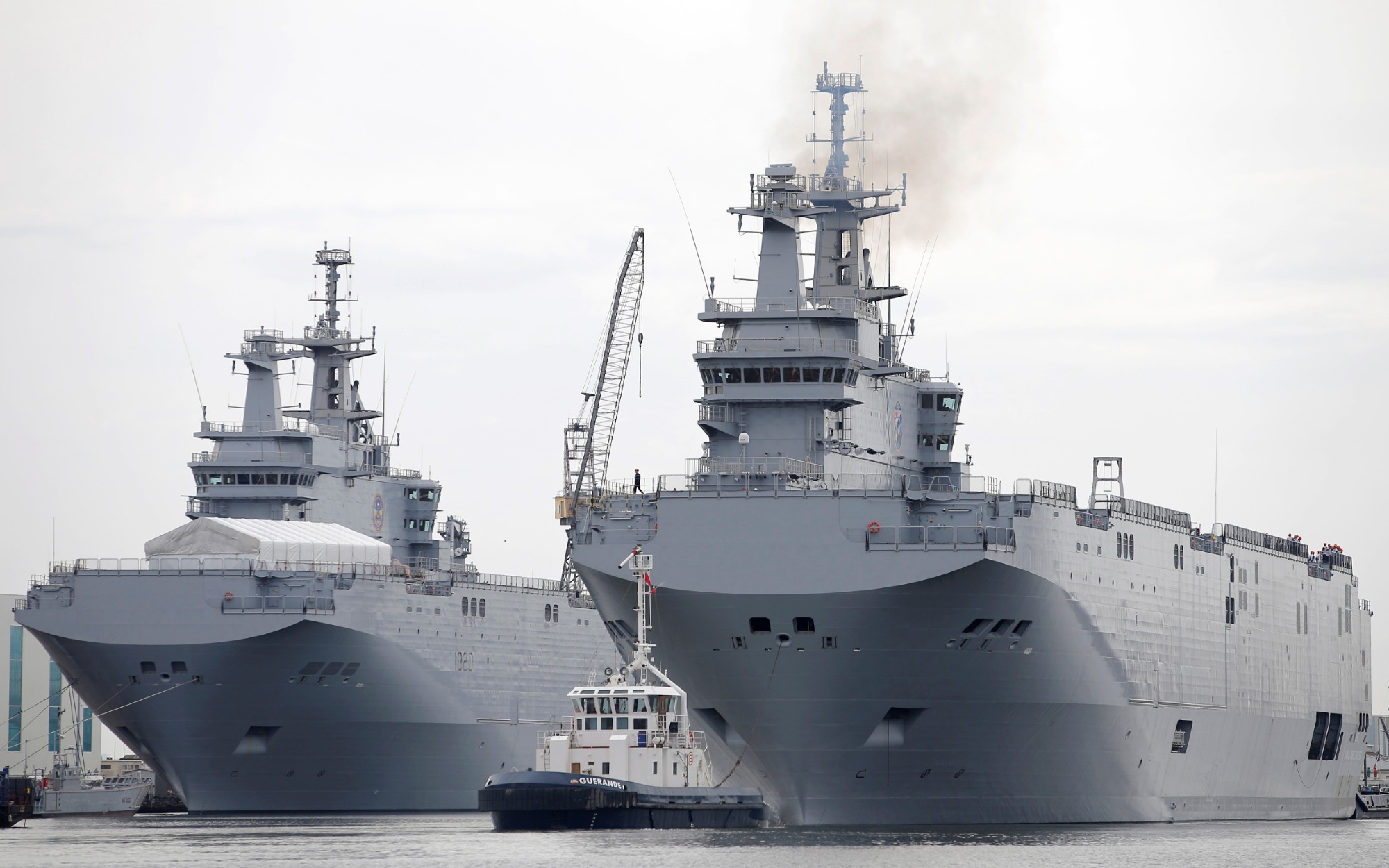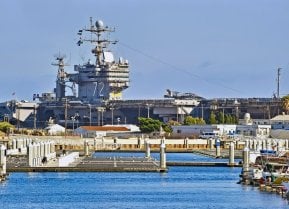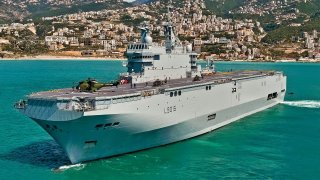France's Mistral-class Amphibious Assault Ships: Mini Aircraft Carriers?
France's Mistral-class amphibious assault ships, commissioned between 2006-2012, embody formidable naval power, capable of carrying 16 heavy helicopters and a mechanized regiment. These "helicopter carriers" were designed as part of France's vision to enhance its amphibious operational capabilities within NATO and the European Amphibious Initiative.
Summary: France's Mistral-class amphibious assault ships, commissioned between 2006-2012, embody formidable naval power, capable of carrying 16 heavy helicopters and a mechanized regiment. These "helicopter carriers" were designed as part of France's vision to enhance its amphibious operational capabilities within NATO and the European Amphibious Initiative. The project spawned from the need to replace older classes and integrate more air capacity.
France's Power Projection: Inside the Mistral-Class Amphibious Ships
France has its own class of formidable “helicopter carriers,” the Mistral amphibious assault ships. These command and power projection vessels have the capacity and capability to lug up to 16 heavy helicopters and one-third of a mechanized regiment, making them a crucial component of the French Navy. The first three ships in the class, Mistral (L9013), Tonnerre (L9014), and Dixmude (L9015) , were commissioned in France between 2006 and 2012. The last two Mistral ships to be constructed, Gamal Abdel Nasser (L1010) and Anwar El Sadar (L1020), are currently in service with the Egyptian Navy.
The history of the Mistral-Class
At the tail-end of the twentieth century, French officials recognized the need to upgrade its fleet of amphibious capabilities in order to keep up with its naval counterparts. Around this time, France’s national design for amphibious operations was evolving, aimed to replace the country’s existing Foudre-class and Ouragan-class vessels. Specifically, the French Navy needed a future fleet to further integrate into the North Atlantic Treaty Organization’s (NATO) Allied Tactical Publication and the European Amphibious Initiative.
France’s new framework emphasized air capabilities and required an increase in the number of airframes and individuals it could carry. Specifically, the project aimed to create a force consisting of four combat companies for ten days, encompassing 1,400 men, 280 vehicles, and 30 helicopters. By 1997, ship design proposals were revealed. Referred to as nouveau transport de chalands de débarquement (NTCD), these vessels were minimally derived from the canceled PH 75 nuclear helicopter carrier.
As detailed by Seaforces, the largest of these designs was the BIP-19, which would ultimately serve as the foundation of the Mistral-class. “The BIP-19 design included a 190-metre (620 ft) long flush deck, with a 26.5-metre (87 ft) beam, a draught of 6.5 metres (21 ft), and a displacement of 19,000 tonnes; dimensions which exceeded the requirements of the NTCD concept. Three smaller ship designs were also revealed, based on scaled-down versions of the BIP-19 design and with a common beam of 23 metres (75 ft): BIP-13 (13,000 tonnes, 151 metres (495 ft)), BIP-10 (10,000 tonnes, 125 metres (410 ft)), and BIP-8 (8,000 tonnes, 102 metres (335 ft)). BIP-8 incorporated features of the Italian San Giorgio-class amphibious transports but included a helicopter hangar.”
The construction phase:
French officials first confirmed their plans to go forward with the construction of the BIP-19 concept at Euronaval 1998. Manufacturers DCN and Chantiers de l’Atlantique were awarded the contract to build these vessels the following year. By 2001, the contract for the first two mistral-class vessels was placed.
Two years later, the keel for the lead ship of the class was launched from the Brest dockyard.
Mistral was later commissioned into the French Navy in 2006. According to the 2008 French White Paper on Defense and National Security, two additional Mistral-class warships were to be constructed. However, by 2013, the concept of a fourth amphibious ship was abandoned by the same white paper.
Specs & capabilities
Each Mistral-class ship can carry an array of heavy helicopters below deck, including the AS 532 U2 Cougar, AS 665 Tiger helicopters, and the SA 330 Puma. The Mistral and Tonnerree can also carry 40 troops for 45 days at speeds over 19 knots. In terms of armaments, the Mistral ships are quite capable. Two MBDA France Simbad launchers have been incorporated on the Mistral, which also possesses infrared guidance.

The amphibious ship also has two Breda Mauser 30mm naval guns and four 12.7mm machine guns. The class’ sonar functions are equally sophisticated. In addition to the ships’ electronic support measures like the Thales ARBR 21 radar warning receiver, the vessels are also fitted with MR-3D NG multirole radar that can locate low and medium-level targets at long ranges. The Mistral vessels are the first ships to sail for the French Navy to be powered by azimuth thrusters. Five 16-cylinder Wartsila 15V32 diesel alternators power these thrusters, which enhances the ships’ maneuvering capabilities.
Operational history for Mistral-Class
As certified members of the NATO Response Force’s naval component, the Mistral ships can partake in a Combined Joint Task Force. Following Mistral’s entry to service, she joined three other French ships off the coast of Lebanon as the 2006 war erupted. Tonnerre’s maiden voyage occurred in Cote d’Ivoire following the Ivorian Civil War in 2007.

Subsequently, Tonnerree was involved in a humanitarian mission in the Gulf of Guinea while Mistral aided humanitarian missions near Burma following Cyclone Nargis.
Russia first expressed interest in purchasing two Mistral-class ships in 2009. While Moscow and France penned a deal regarding the two ships in 2011, French officials ultimately nixed the transaction in 2014 due to Russia's invasion of Crimea. Egypt acquired the Mistral ships in 2015 for roughly 950 million Euros.
About the Author: Maya Carlin
Maya Carlin, National Security Writer with The National Interest, is an analyst with the Center for Security Policy and a former Anna Sobol Levy Fellow at IDC Herzliya in Israel. She has by-lines in many publications, including The National Interest, Jerusalem Post, and Times of Israel. You can follow her on Twitter: @MayaCarlin.
Image Credit: Creative Commons.


